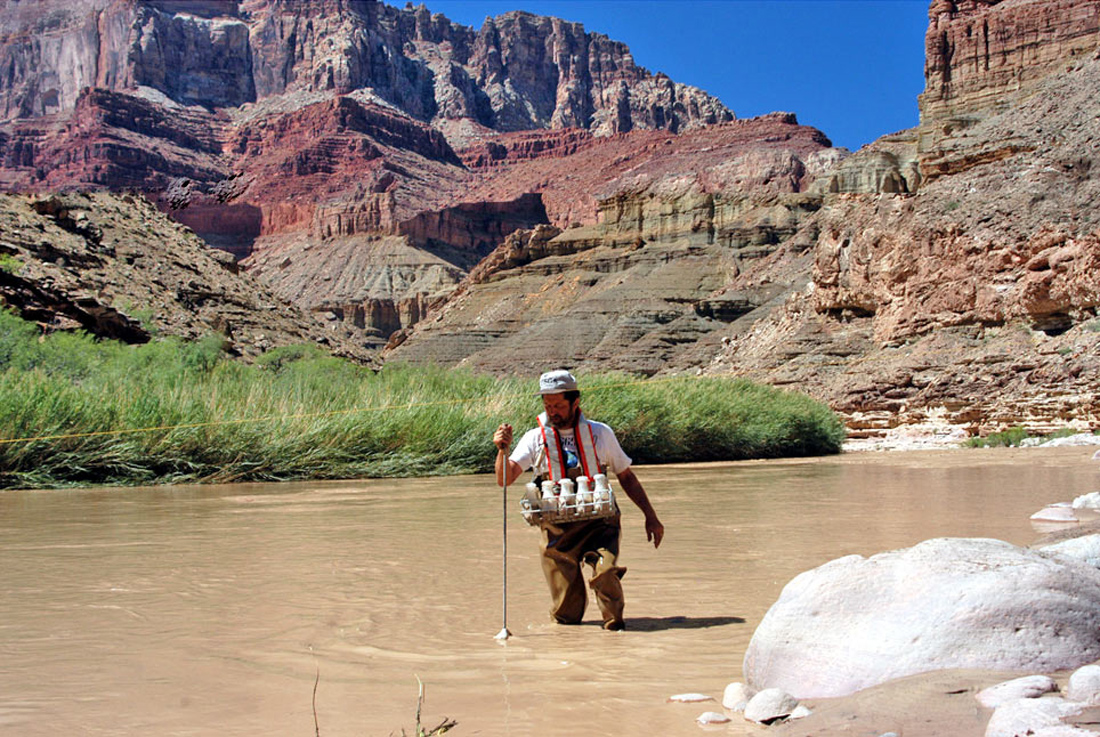The USGS Water Science School
Here, a U.S. Geological Survey (USGS) hydrographer is collecting a suspended-sediment water sample from the Little Colorado River, a kilometer upstream from the Colorado River, Grand Canyon, Arizona, USA. To gain knowledge of the suspended-sediment characteristics of the entire river (water quality can vary greatly across a river), suspended-sediment water samples have to be collected in multiple cross-section intervals (notice the string going horizontally across the picture, which allows the hydrographer to sample in a straight line across the river). Suspended-sediment concentrations vary horizontally across the river and also vary vertically with depth, so the sampler must also sample vertically by moving the sample bottle up and down at a constant speed, being careful not to hit the stream bed, which could cause bottom sediment to rise into the water column.
The hydrographer carries numerous glass bottles, using one bottle for each cross-sectional location. The bottle is secured in the metal sampler and there is a tube in the front of the sampler to allow water to enter the bottle at a controlled rate, while letting out air from inside the bottle. The very brown water here indicates the presence of a lot of fine dirt particles and the turbidity of this water is very high.
![]() Back to: Sediment | Turbidity | Impervious surfaces
Back to: Sediment | Turbidity | Impervious surfaces

Credit: USGS